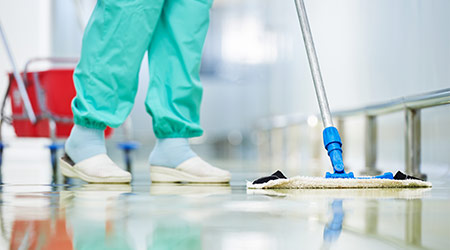The COVID-19 pandemic has prompted healthcare facility managers to rethink and update nearly every area of their operations. Environmental services departments have been at the forefront of many changes in an effort to sanitize surfaces, stop the spread of the coronavirus and protect patients and staff. Now managers are taking these changes into consideration as they consider the potential long-term impact of new technology.
In response to COVID-19, companies manufacture robots used for the cleaning and disinfection work done by environmental services teams in hospitals. Might the machines also one day take their jobs? The robots would not come to take the jobs of environmental services teams, but rather help those workers disinfect hospital surfaces — st least for now, according to a new study reported by Infection Control Today.
“Presently, disinfection robots do not replace routine (manual) cleaning but may complement it,” says the study by investigators with several European hospital systems. “They might in the future provide validated, reproducible and documented disinfection processes.”
The robots offer an opportunity to disinfect hospital rooms quickly and might lead to cost savings by reducing cleaning staff. Such a development would not only affect environmental services teams but also the infection preventionists who often train those teams.
Investigators say hospital administrators increasingly see the potential of robots for disinfecting surfaces in a cost-effective manner. One limitation of using robots involves turnover — the need to clean and disinfect a hospital room quickly after one patient vacates and the next occupies. The robots add an extra layer of work that takes extra time.
Click here to read the article.

 Grounding Healthcare Spaces in Hospitality Principles
Grounding Healthcare Spaces in Hospitality Principles UC Davis Health Selects Rudolph and Sletten for Central Utility Plant Expansion
UC Davis Health Selects Rudolph and Sletten for Central Utility Plant Expansion Cape Cod Healthcare Opens Upper 2 Floors of Edwin Barbey Patient Care Pavilion
Cape Cod Healthcare Opens Upper 2 Floors of Edwin Barbey Patient Care Pavilion Building Sustainable Healthcare for an Aging Population
Building Sustainable Healthcare for an Aging Population Froedtert ThedaCare Announces Opening of ThedaCare Medical Center-Oshkosh
Froedtert ThedaCare Announces Opening of ThedaCare Medical Center-Oshkosh